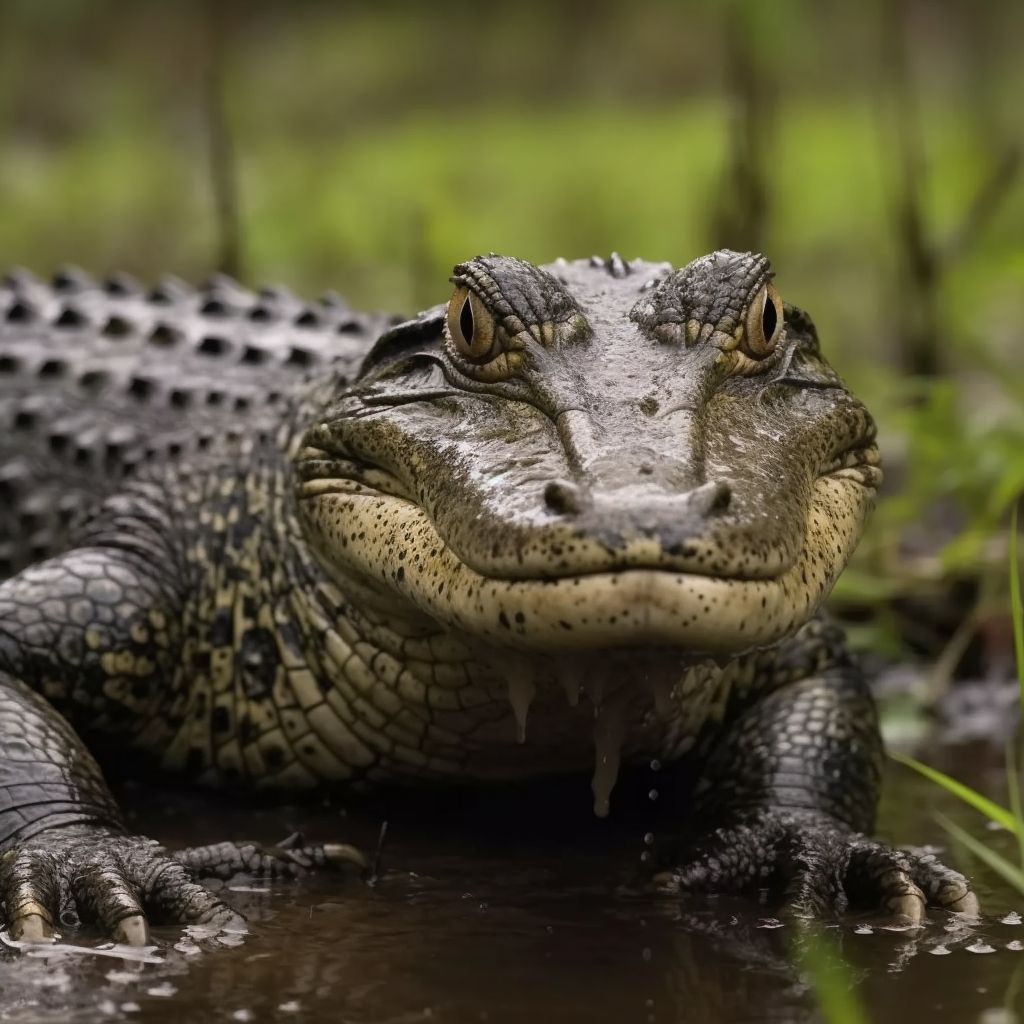Crocodile
The American crocodile (Crocodylus acutus) is a species of crocodilian native to the coastal regions of the Americas, ranging from the southern tip of Florida in the United States to the northern regions of South America. Known for its impressive size, powerful jaws, and distinctive snout, the American crocodile has long captivated the public's imagination and played a significant role in the folklore and ecology of the regions it inhabits.
Description and Distribution
The American crocodile is a large reptile, with adult males reaching lengths of up to 20 feet and weighing as much as 2,000 pounds. Females are generally smaller, with lengths of up to 12 feet and weights of up to 800 pounds. The species is characterized by its long, narrow snout, which is filled with numerous sharp teeth used for capturing prey. The crocodile's body is covered in thick, armored scales that provide protection from predators and the elements.
The American crocodile is found primarily in coastal regions, including brackish waters, estuaries, and mangrove swamps. Its range extends from the southern tip of Florida in the United States, through the Caribbean, and along the Central and South American coasts as far south as northern Peru and Venezuela. The species is particularly abundant in the coastal regions of Central America, where it has been known to venture into freshwater rivers and lakes.
Behavior and Ecology
The American crocodile is a primarily nocturnal animal, spending much of its day basking in the sun to regulate its body temperature before becoming more active at night. As a reptile, the crocodile is ectothermic, meaning it relies on external sources of heat to maintain its internal temperature.
The diet of the American crocodile consists mainly of fish, birds, and small mammals, although it is also known to consume carrion when food is scarce. The crocodile employs an ambush hunting strategy, using its powerful jaws to capture prey with a swift, surprise attack.
Reproduction in the American crocodile occurs during the dry season, with females laying between 20 and 60 eggs in a nest made of vegetation and sand. The eggs are incubated for approximately 80 to 90 days, with the temperature of the nest determining the sex of the hatchlings. Female crocodiles are known to be protective of their nests, guarding them from potential threats until the eggs hatch.
Conservation and Human Interaction
In the late 19th century, the American crocodile was subject to hunting for its valuable hide, which was used in the production of leather goods, such as belts and bags. This, combined with habitat loss due to coastal development, led to a decline in the crocodile's population in some areas.
Efforts were made to protect the species and its habitat, with many areas implementing hunting restrictions and establishing wildlife preserves to safeguard critical nesting sites. These conservation measures have helped to stabilize the population of the American crocodile, ensuring its continued presence in the ecosystems it inhabits.
In popular culture and folklore, the American crocodile has long been a source of fascination and fear. Tales of monstrous, man-eating crocodiles have been shared by local communities for generations, fueling an aura of mystery and danger surrounding the species. While the American crocodile is certainly a formidable predator, it is important to remember that it is an essential part of the ecosystems it inhabits and plays a vital role in maintaining the delicate balance of these environments.
Conclusion
The American crocodile is a remarkable and captivating species that has long been an integral part of the coastal regions it calls home. Its unique adaptations, formidable predatory skills, and cultural significance make it a truly fascinating subject of study and conservation. Through continued efforts to protect the species and its habitat, we can ensure that the American crocodile remains an enduring presence in the ecosystems it inhabits for generations to come.
In addition to its ecological importance, the American crocodile also serves as a symbol of the rich biodiversity found throughout its range. As a top predator, the crocodile plays a crucial role in maintaining the health of its environment by regulating prey populations and keeping ecosystems in balance.
Scientific research on the American crocodile has helped to advance our understanding of the species and its unique biology. Studies have focused on topics such as the crocodile's thermoregulation, reproductive strategies, and territorial behavior. This knowledge has not only deepened our appreciation for the crocodile as a fascinating species but has also informed conservation efforts aimed at protecting it and its habitat.
As we move forward into the 20th century, it is our responsibility to ensure that the American crocodile and its environment are preserved and protected for future generations to enjoy. Through continued research, education, and conservation initiatives, we can work together to safeguard the survival of this remarkable species and the ecosystems that depend on it.
By understanding and appreciating the American crocodile's role in its environment and the cultural significance it holds for the people who share its habitat, we can foster a greater sense of connection to the natural world and inspire a commitment to its conservation. In doing so, we can ensure that the American crocodile remains a vital and enduring symbol of the rich and diverse natural heritage of the Americas.

